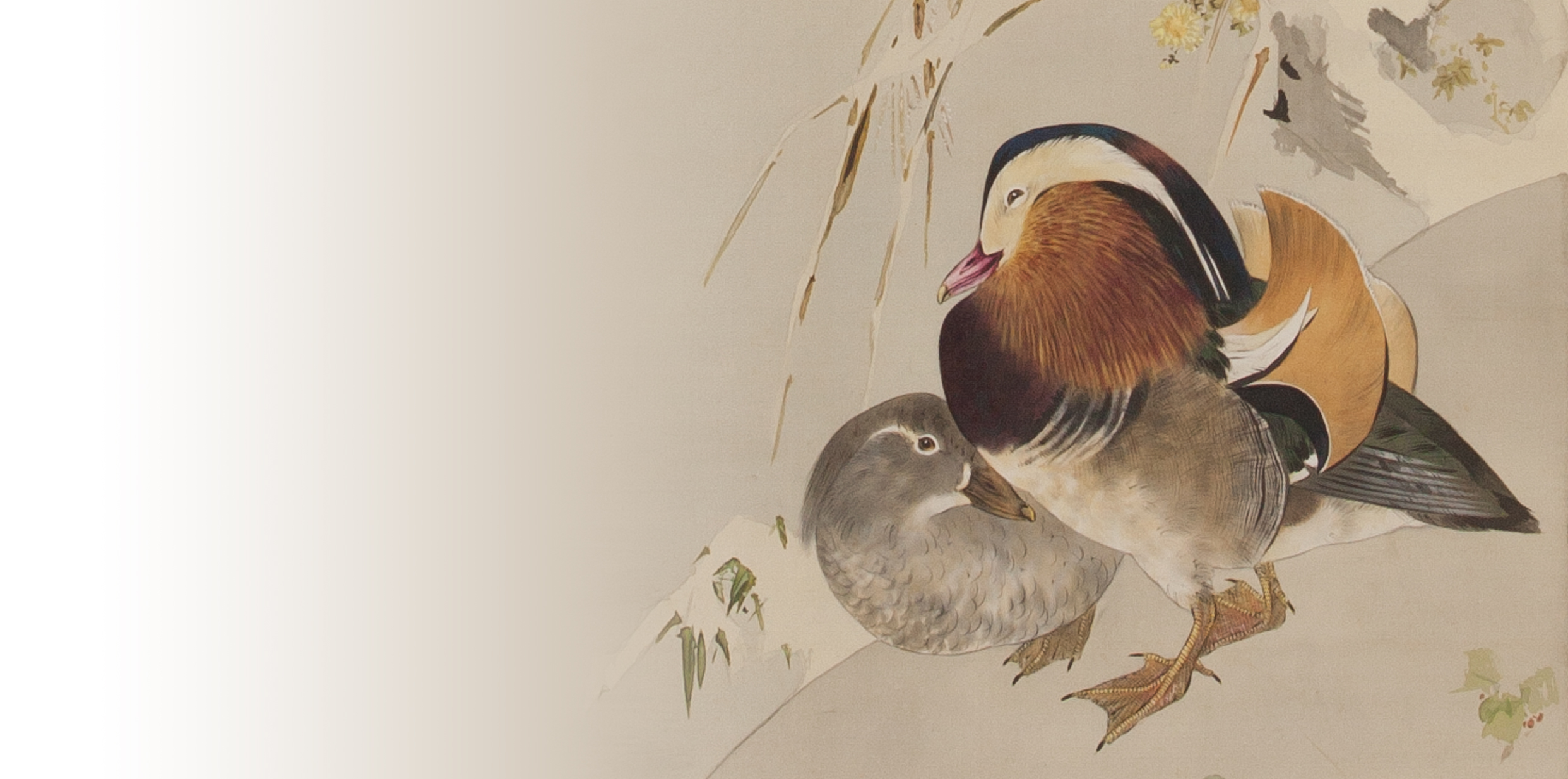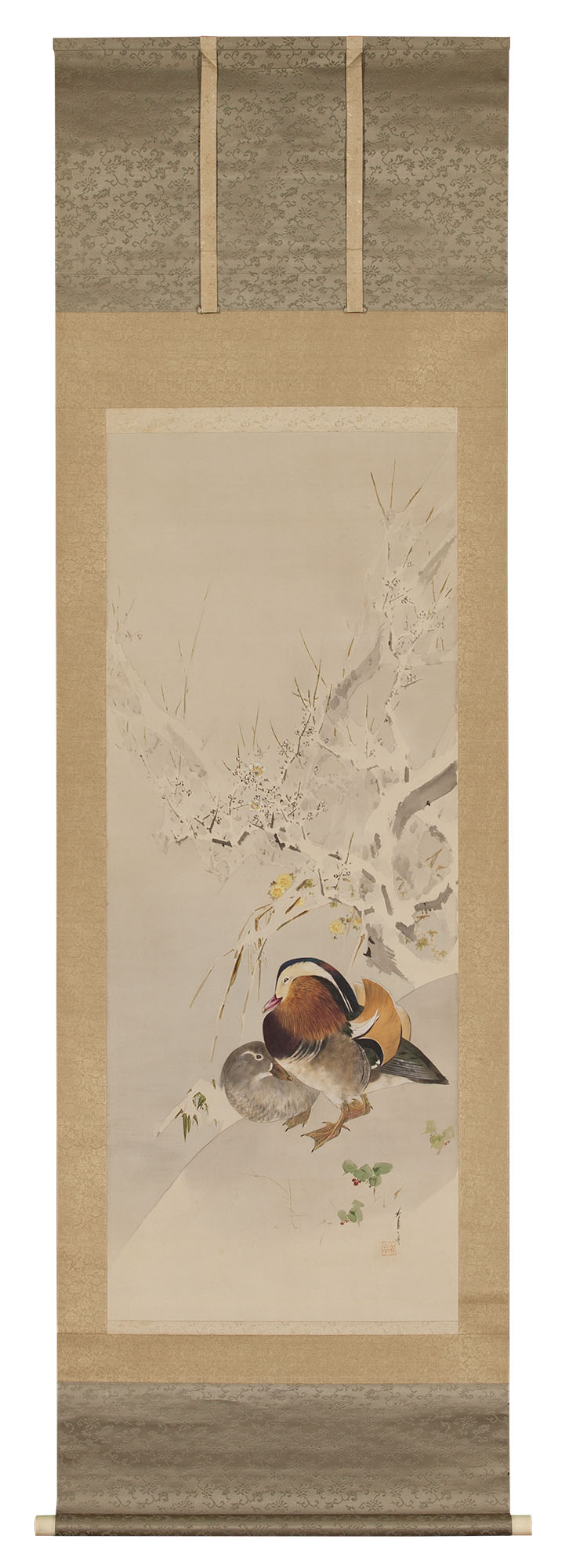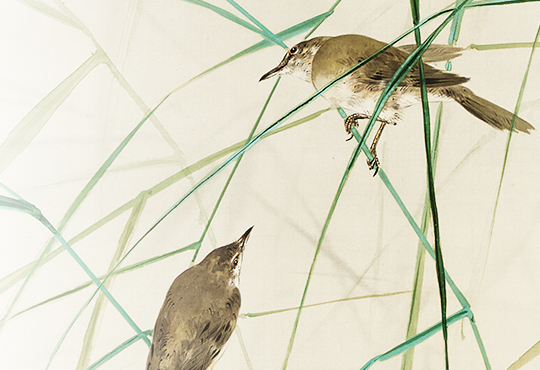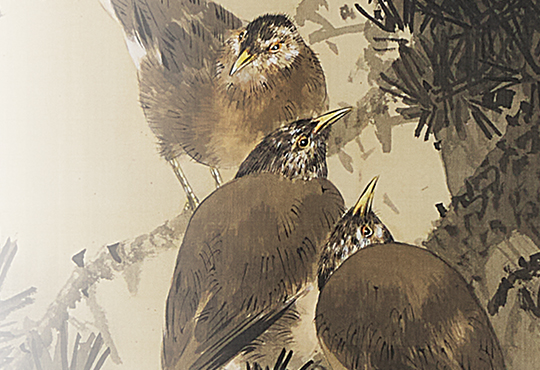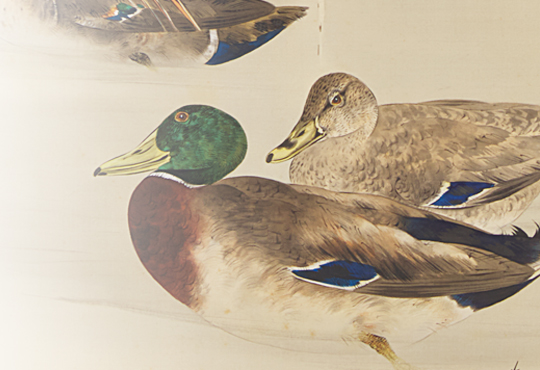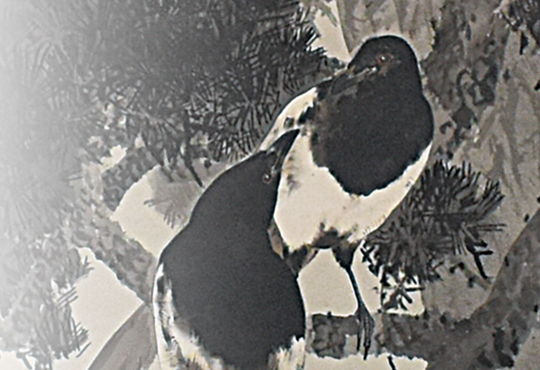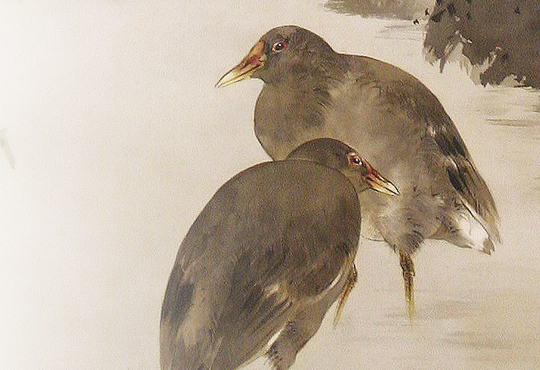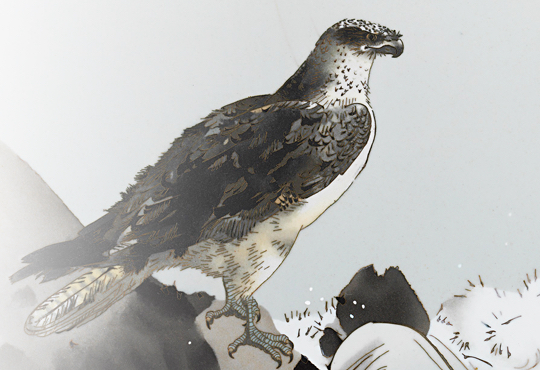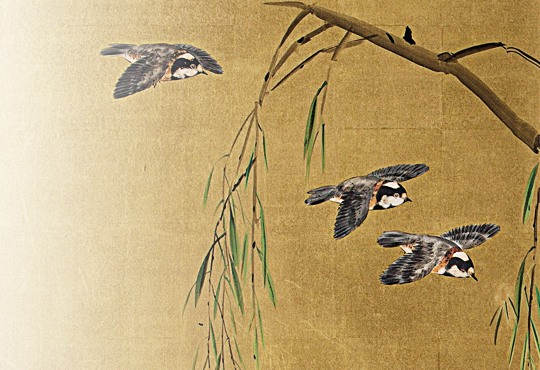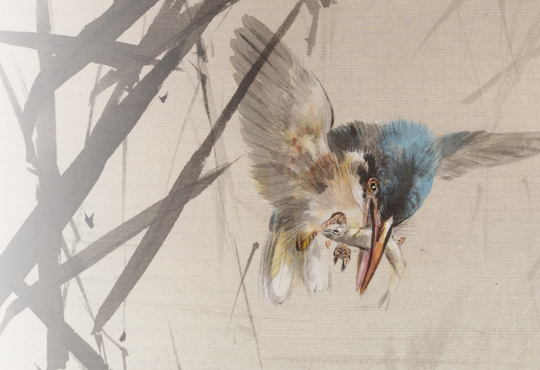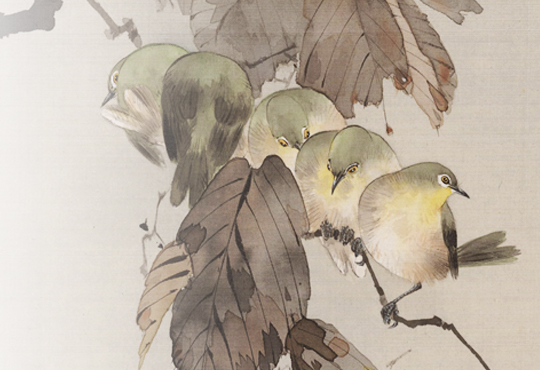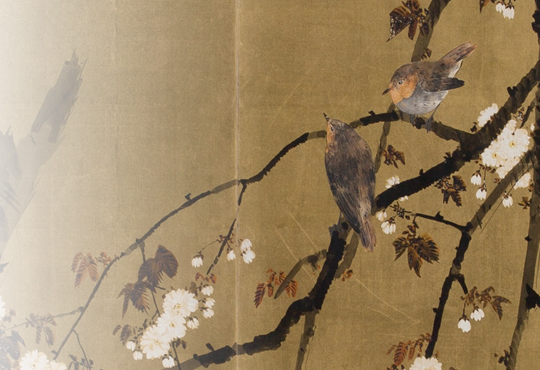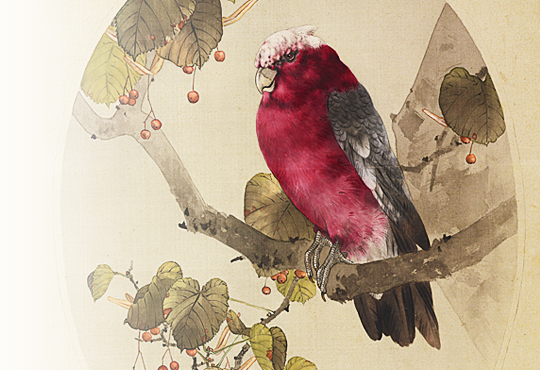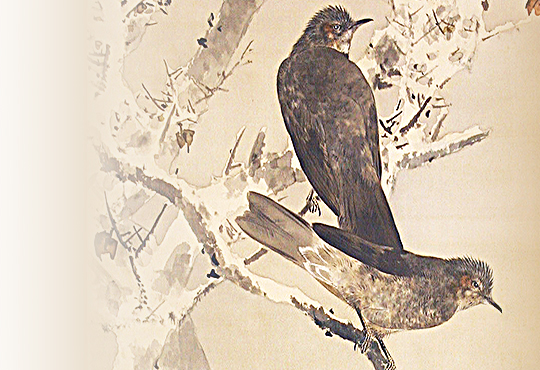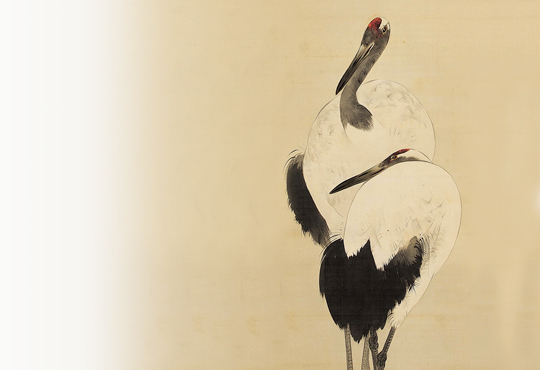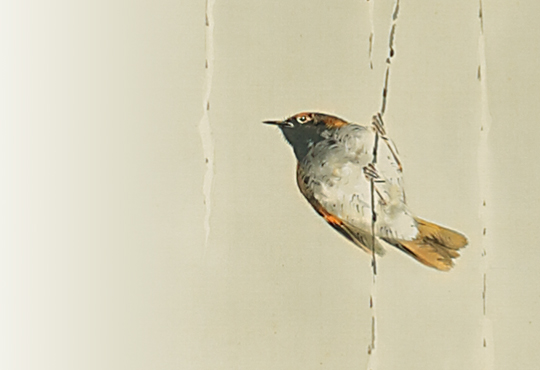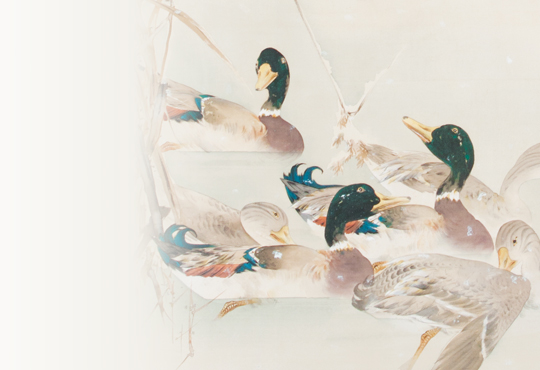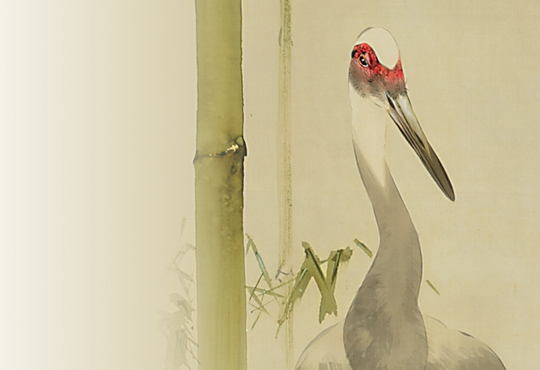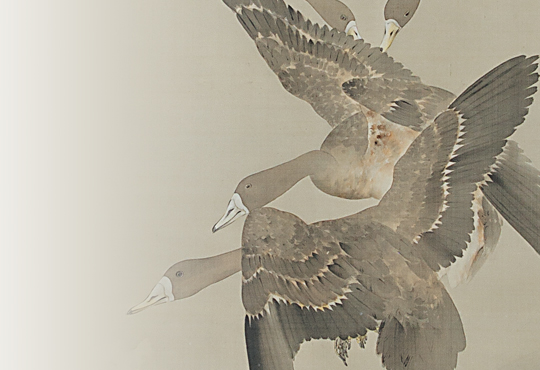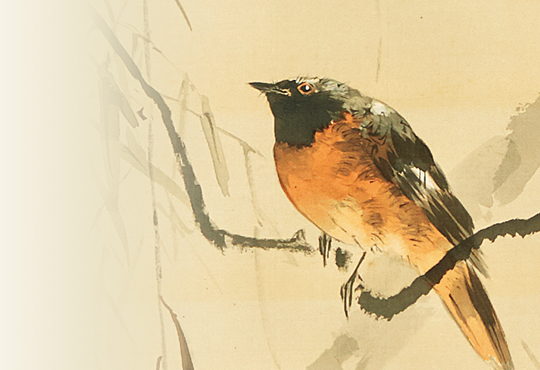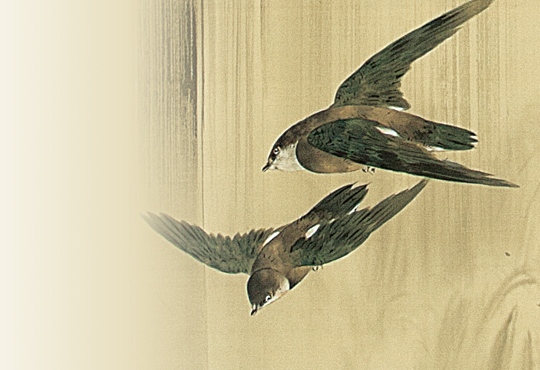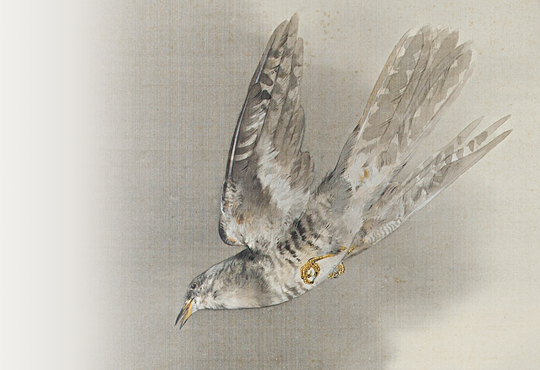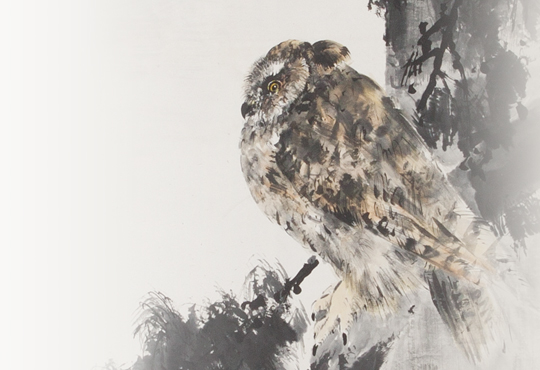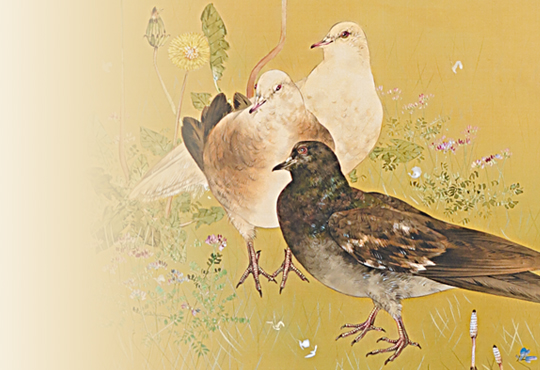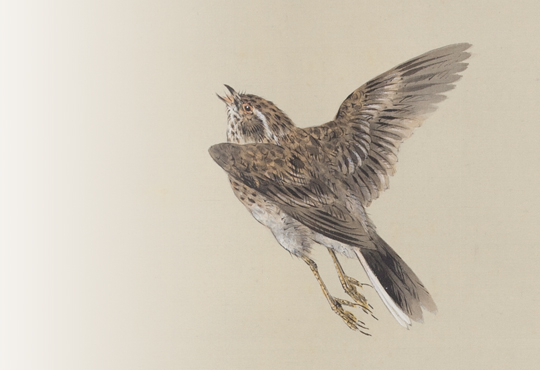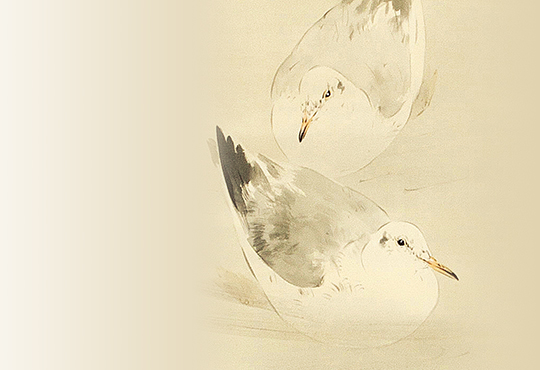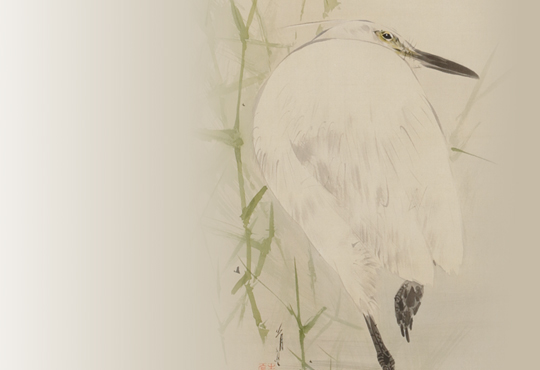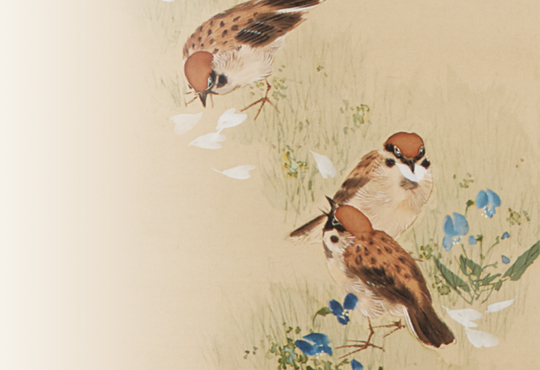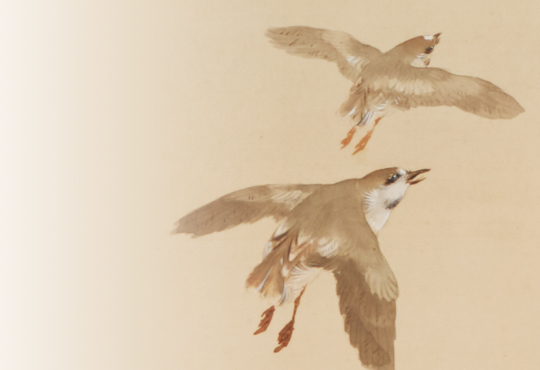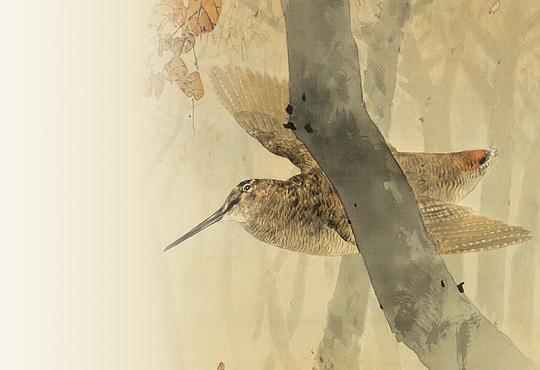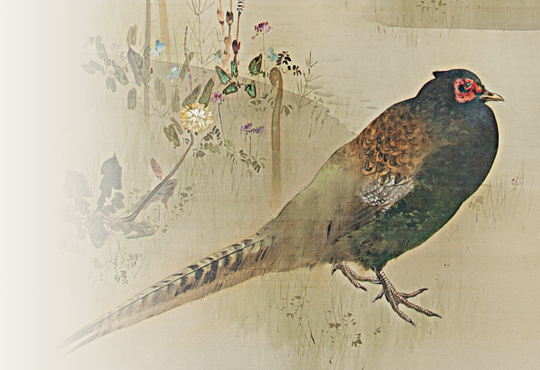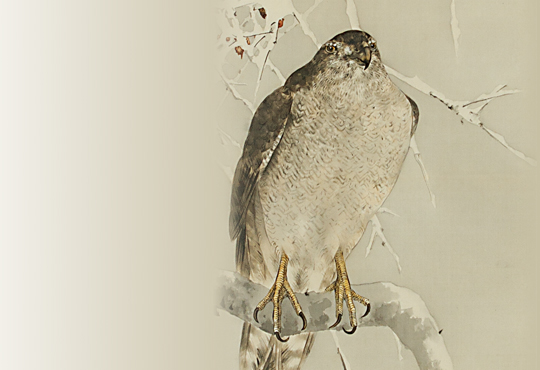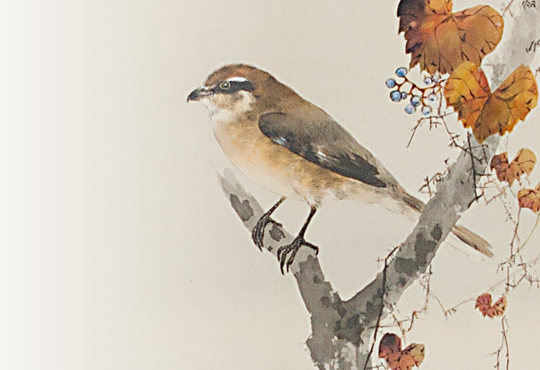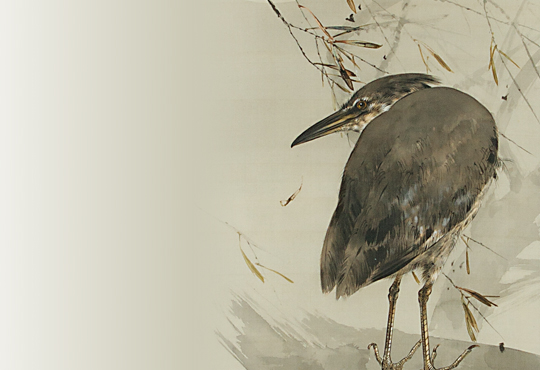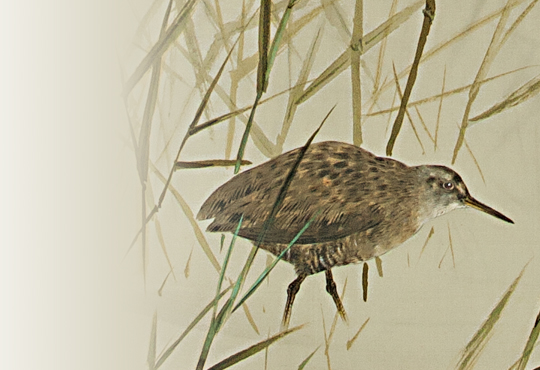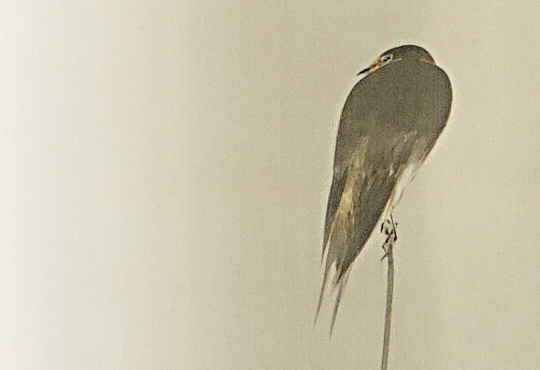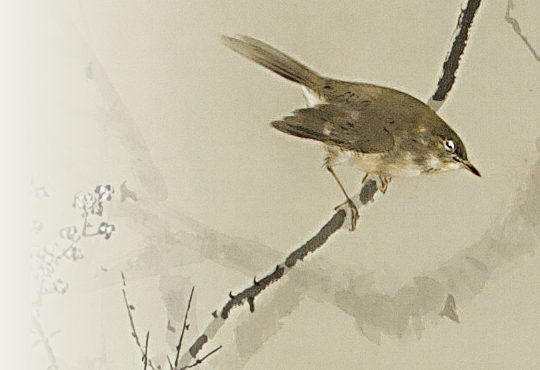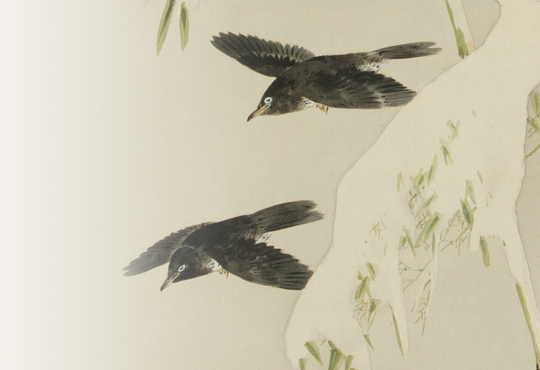vol.13 Seitei’s Sense of Color: Mandarin Ducks in Snow
What does it mean to be flashy? According to the dictionary, it’s defined as an “appearance, shape or color that is gorgeous and eye-catching”. For painting, this typically implies an intense use of strong colors or an exaggerated compositional arrangement. While flashiness may generally be interpreted positively, for painting, itmay spoil the quality of the artwork. As such, flashiness poses as a major challenge for painters who lack the right kind of artistic skill and awareness to color.
Flashiness is a one of the most attractive qualities to birds. From old times, humans have prized colorful feathers ornamentally, and unfortunately, this overindulgence has led various bird species to a decrease in population and even extinction. Then, which is the flashiest bird? As mentioned before, because flashiness can be interpreted differently, the answer depends on which aspect we focus on. For example, birds with a single primary color may be interpreted as flashy. Speaking of Japanese birds, the Ruddy Kingfisher (Halcyon coromanda) is mostly red (except for its pale line on its waist) while the Black-napled Oriole (Oriolus chinensis) is bright yellow (but black from the eyes to the back of head), and the upper part of the Blue-and-White Flycatcher (Cyanoptila cyanomelana) is a shiny blue (except for its black face and chest and white belly). Despite their limited color and lack of complicated patterns, their single, primary colored body is what makes them bold and brilliant. On the other hand, some consider birds with many colors flashy. For Japanese birds, we have the Fairy Pitta (Pitta nympha), the Green Pheasant (Phasianus versicolor), and the Common Kingfisher (Alcedo atthis). Among these, the Fairy Pitta (its Japanese name means the eight-colored bird) is adorned for its eight primary colors and, as such, is very popular for its beauty and rarity.
However, there is no dispute that the Mandarin Duck, with its many primary colors, makes them the archetypal Japanese flashy bird. Male Mandarin Ducks are proudly flamboyant in their coloration, while the females are plain with little color (this holds as true for the many species of ducks). Despite its nativity to East Asia, the Mandarin Duck is now kept around the world and has even become native to the UK and more. Living by watersides nearby forests, these ducks eat acorns and nuts and nest in large tree-caves. After hatching, chicks immediately jump from their tree-cave nest to the ground and walk to the waterside to follow their mother. My lucky student was able to observe the chicks who responded to their mother’s call. Jumping out of their nest, they fell one after another unto the ground several meters below. As this behavior is common to the species, these chicks will not be injured. On another note, while a good couple is sometimes called a “Mandarin Duck couple” in Japan, this is an ornithological mistake. Rather, since the Mandarin Ducks change their mates annually, only the female raises the chick while male duck does nothing. Thus, in weddings where there are ornithologists or birdwatchers, you should say “Don’t be like a Mandarin Duck”.
Let us take a closer look at the colors of the flashy male Mandarin Duck. We can notice that each part of its body has different color. Its beak is pink, forehead and occipital are bluish green, the top of its head is magenta, and the upper of eye and lower of belly are white. Its cheeks, sail feathers (a characteristic tertiary wing feather, shaped like a sail) and legs are orange while its chest is violet. Furthermore, the sides of its chest and lower flank have black and white stripes, part of its back and the outer edges of its sail feathers are blue, the sides of its belly have fine stripes of brown and black, and its wings and tail are a grayish green. Resulting in a sum of ten colors in a single male Mandarin Duck. As for the prior mentioned Japanese birds with many colors, the Fairy Pitta has eight (as its Japanese name suggests), the Green Pheasant has seven, and the Common Kingfisher has six: making the Mandarin Duck is the most colorful of Japanese birds.
So, how did Seitei manage to draw these abundant colors of the male Mandarin Duck? Let us count the number of colors of the duck the artist depicted in the work. The beak is pink while its forehead, occipital, the edges of the sail feathers and the stripes on the side of its chest are a dark bluish green. The top of its head and chest are magenta, the stripe that lines its eyes and the lower part of its belly are white, and its cheeks, sail feathers, flank and legs are orange, and the wings and tail are grayish green. Making this a total of only six colors. The bluish green is dark and restrained and is used as the substitute to violet, blue, and black. I assume that Seitei intentionally avoided the use of primary bluish colors. Similarly, this refrain of using bluish colors may be observed in his other works, “Mandarin Ducks in Snow” (National Museum of Modern Art, Tokyo) and “February in Twelve Months of Flowers and Birds” (Private Collection).
Why did Seitei reduce the number of colors, especially bluish colors, when depicting the Mandarin Duck, and what difficulties are there in depicting the duck in its ten real colors? To answer this, let us imagine a case in which the bird was depicted in its full colors. If the four missing colors (blue, violet, black, and brown) are added to the work, the impression of the duck will change drastically. Since bluish colors overwhelm orange tones, the outline and color-contrast of the bird will be accentuated- thus strengthening the bird’s presence. As such, only the duck will come to the viewer’s attention, this would overwhelm and eliminate the blank margins of the image. Since Japanese paintings typically value the margins of the composition, the disproportionality of these colors would be fatal to the work.
I assume that Seitei would have been aware of this. Hence why he suppressed all these bluish colors by using a dark bluish green, reducing the bird to a blurred, orange presence. By reducing the presence of the Mandarin Duck, the painting can be viewed in its compositional entirety. Moreover, by incorporating yellow chrysanthemum flowers above the bird and green bamboo-grass and shrubs with red fruits to its side, Seitei supplements the three colors the bird lacks (red, yellow, and green). In doing so, the viewer’s attention is drawn, not only to the duck, but also to the background,
While the ten colored Mandarin Duck is considered an attractive subject for artists, they are a formidable subject to paint. Easily breaking the color balance of the artwork, the Mandarin Duck poses a challenge to the artist’s ability to control and use color. Seitei addressed this challenge by controlling and restricting his use of color. This work is, thus, a testament to his sensitivity to color.
Author : Masao Takahashi Ph.D. (Ornithologist)
Dr. Masao Takahashi was born 1982 in Hachinohe (Aomori prefecture) and graduated from Rikkyo University’s Graduate School of Science. Dr. Takahashi specializes in behavioral ecology and the conservation of birds that inhabit farmlands and wet grasslands. Focusing on the relation between birds and art, he has participated in various museum and gallery talks.
